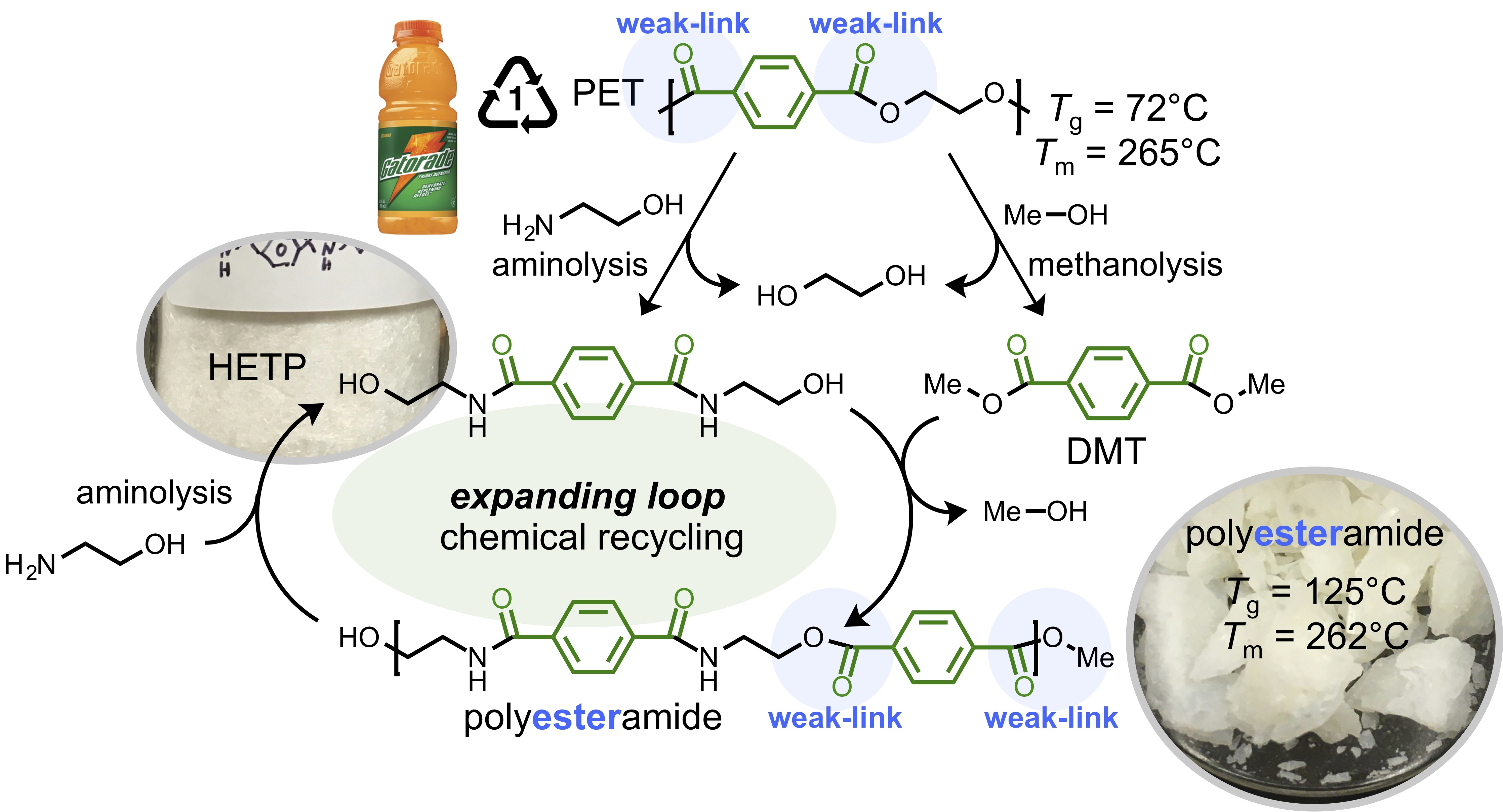3742995
Expanding loop chemical recycling of PET
Date
August 21, 2022
Related Products
Closing the loop on polydimethylsiloxane | Poster Board #1516
The typical end-of-life scenarios for commodity polymers are landfilling, incineration, and mechanical recycling. One of these commodity polymers is polydimethylsiloxane (PDMS), or silicone. PDMS has many uses including lubricants, sealants, elastomers, and biomedical devices…
Replacing fossil fuel-derived commodity plastics with biobased and degradable polyesteramides
Plastics are indispensable materials in our lives; however, they are also damaging our planet in several ways. For a sustainable society, we must create a new type of plastic that can replace current commodity plastics…
One step forward or three steps back: Avoiding the pollution-intensive synthesis of polydimethylsiloxane
Polydimethylsiloxane (PDMS) is found in many different products ranging from greases and lubricants to elastomers and biomedical devices. The silicon in PDMS originates in silica and must undergo three energy- and pollution-intensive transformations during its journey from silica to PDMS…
One step forward or three steps back: Avoiding the pollution-intensive synthesis of polydimethylsiloxane
Polydimethylsiloxane (PDMS) is found in many different products ranging from greases and lubricants to elastomers and biomedical devices. The silicon in PDMS originates in silica and must undergo three energy- and pollution-intensive transformations during its journey from silica to PDMS…



